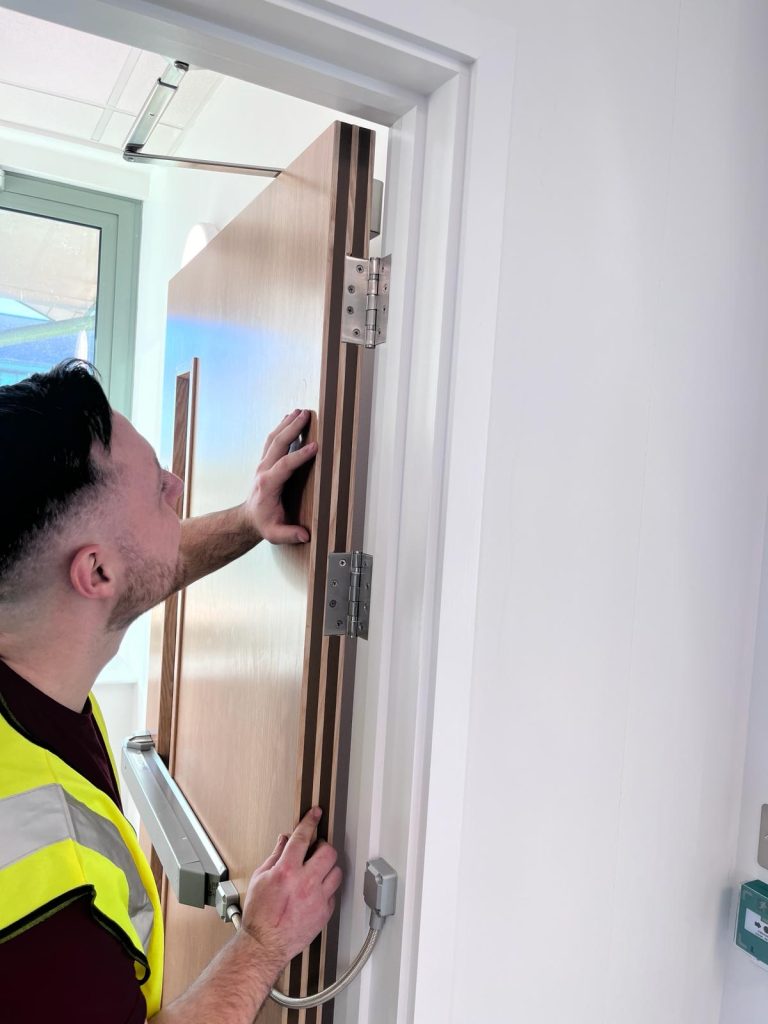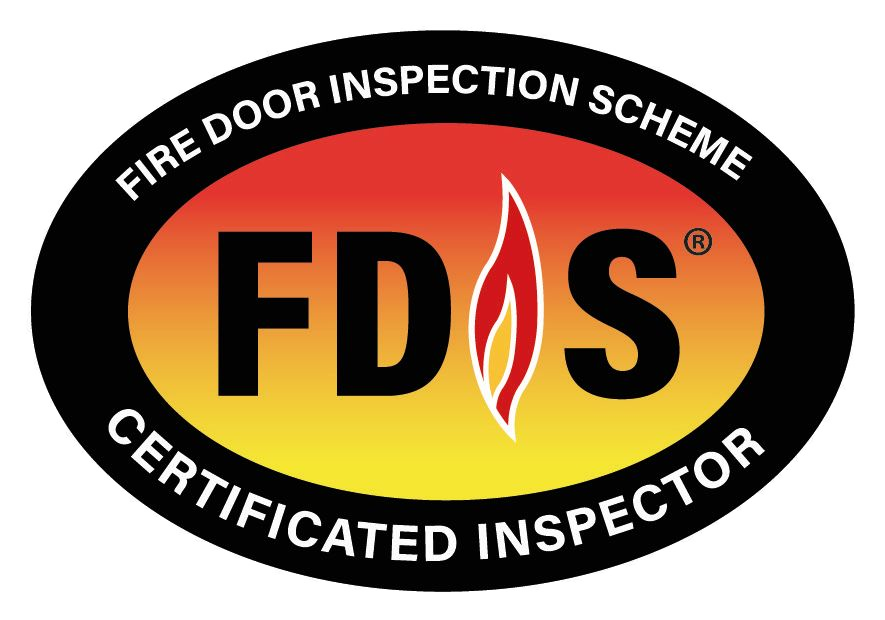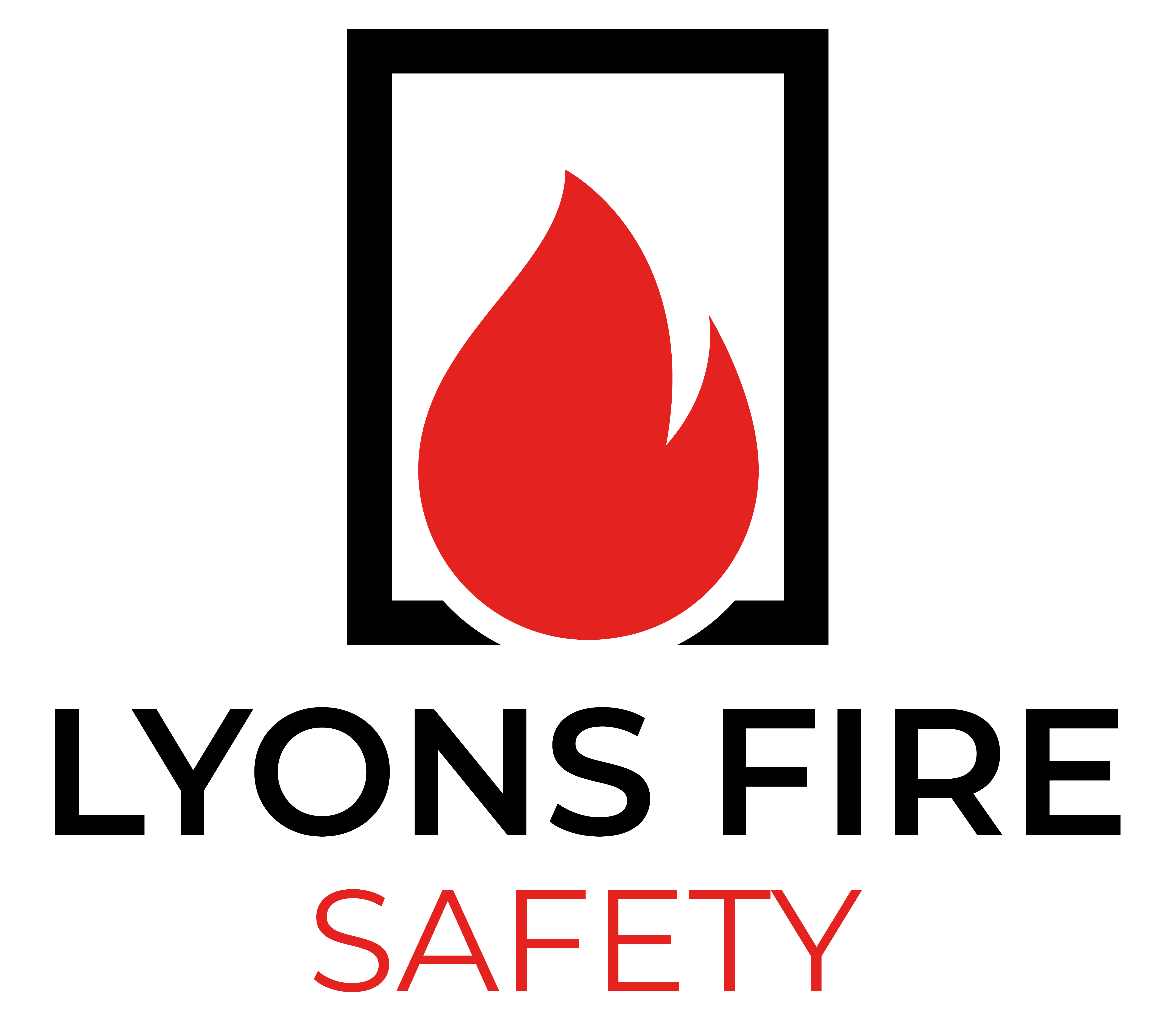Fire Risk Assessments: Safeguarding UK Properties
At Lyons Fire Safety (LFS), we’re committed to helping you navigate the complex world of fire safety regulations in the UK, and, providing you with the necessary services to follow up.
Today, we’ll explore the crucial topic of fire risk assessments and their importance in safeguarding properties across the United Kingdom.
At LFS, we provide fire door inspections, installations and maintenance, which are all critical when it comes to resolving fire safety, and passive fire protection, issues.
In need of fire door related services? – look no further than our team at LFS. Get in contact for a quote, and let us know what issues you’re facing Contact – Lyons Fire Safety
What is a Fire Risk Assessment?
A fire risk assessment is a thorough evaluation of fire hazards in a building or workplace. It’s a legal requirement for all non-domestic premises in the UK under the Regulatory Reform (Fire Safety) Order 2005. This process identifies potential fire risks, assesses their likelihood and severity, and implements measures to reduce these risks.
Key Components of a Fire Risk Assessment
- Identifying fire hazards
- Determining who is at risk
- Evaluating and removing or reducing risks
- Recording findings
- Reviewing and updating the assessment regularly

Why are Fire Risk Assessments Important?
Fire risk assessments are vital for several reasons:
Legal compliance with UK regulations – we recently published a page concerning both fire safety regulations in the UK, and more specifically, the Building Safety Act 2022 Explained – take a closer look here.
These assessments essentially protect lives and property. Our team at LFS identifies hazards, or potential hazards that are specific to the premises. We also will implement safety measures where fire safety is lacking.
For an example, take a look at our recent page on Common Issues and Problems with Fire Doors: Identification, Prevention, and Solutions – here we discussed the issues we encounter with poorly maintained, or improperly installed fire doors.
Lastly, people in charge of businesses, facilities or buildings are responsible for certain aspects of fire safety. A fire risk assessment can be helpful in raising awareness among occupants and staff.
Steps to Conduct a Fire Risk Assessment
At LFS, we mainly specialise in fire door inspections, installations and maintenance – however, all aspects of work we frequently carry out for clients feed into a thorough fire risk assessment. Let’s take a look at how a standard risk assessment is carried out, and what’s involve:
Identify Fire Hazards
Look for sources of ignition, fuel, and oxygen. Common fire hazards in UK buildings include:
- Electrical equipment (faulty wiring, overloaded sockets)
- Flammable liquids and gases (cleaning products, cooking oils)
- Smoking materials (cigarette butts, matches)
- Heating appliances (portable heaters, boilers)
- Arson risks (unsecured entry points, poor lighting)
Evaluate, Remove, or Reduce Risks
Assess the likelihood of a fire starting and spreading. Implement measures to minimise risks, such as:
- Installing and maintaining fire detection systems (smoke alarms, heat detectors)
- Providing appropriate fire-fighting equipment (fire extinguishers, fire blankets)
- Establishing clear evacuation procedures and escape routes
- Maintaining fire exits and ensuring they’re clearly marked
- Implementing a strict no-smoking policy in high-risk areas
Identify People at Risk
Consider who might be especially vulnerable, such as:
- Employees working late shifts
- Visitors unfamiliar with the premises
- People with disabilities or mobility issues
- Those working in isolated areas or with hazardous materials
Record Findings and Create an Action Plan
Document your assessment and outline steps to improve fire safety. This may include:
- Developing comprehensive staff training programmes
- Scheduling regular fire drills and evacuation practices
- Creating maintenance schedules for all fire safety equipment
- Implementing a fire safety management system
Review and Update Regularly
Fire risk assessments should be reviewed:
- At least annually
- After significant changes to the building layout or use
- Following any fire-related incident, no matter how minor
- When new fire safety legislation is introduced
At LFS, we utilise “Golden Thread” technology – a digitised record keeping system, via the FireDNA App, it helps create a chain of information:
- Manufacturers can share specs, certifications, install tips, and manuals for their products digitally.
- Contractors like us use it to document work, create reports, and assess risks. It’s our handy fire safety paperwork replacement!
- Building owners, tenants, and residents can access compliance data. They can check that safety obligations are met and up to date.
The Role of Fire Doors in Risk Assessment
Fire doors play a crucial role in passive fire protection. At LFS, we can ensure that your fire doors are:
- Installed and maintained according to British Standards
- Fitted with appropriate fire-resistant materials (minimum FD30 rating)
- Equipped with functional self-closing devices and intumescent seals
- Free from damage, modifications, or obstructions
- Clearly labelled as fire doors and kept closed at all times
Implementing Fire Safety Measures
There are often other details involved in a fire risk assessment, not just relating to fire doors. Depending on your property, or facility, you may find you need to implement other various safety measures:
- Fire Detection and Warning Systems: Install interconnected smoke detectors and alarms throughout the premises, ensuring they meet BS 5839
- Fire-Fighting Equipment: Provide appropriate extinguishers (CO2, foam, powder) and ensure staff are trained in their use. Consider installing sprinkler systems in high-risk areas.
- Emergency Lighting: Install BS 5266-compliant emergency lighting to guide occupants to exits during power failures.
- Clear Signage Mark: fire exits and escape routes clearly with photoluminescent signs that comply with BS 5499.
- Staff Training Conduct: regular fire safety training and drills, including the use of evacuation chairs for multi-storey buildings.
The Importance of Professional Assessors
Professional assessors bring expertise and objectivity to the process. There are certain aspects of fire safety best left to professionals like us at LFS. We can:
- Identify less obvious risks that may be overlooked
- Provide comprehensive recommendations based on current UK regulations
- Ensure full compliance with the Regulatory Reform (Fire Safety) Order 2005
- Offer ongoing support and advice for maintaining fire safety standards
Legal Requirements and Penalties in the UK
Failure to conduct correct fire risk assessments can result in severe consequences:
- Fines up to £5,000 for minor offences in Magistrates’ Courts
- Unlimited fines and up to two years imprisonment for serious breaches in Crown Courts
- Potential closure of premises until safety measures are implemented
- Reputational damage and loss of business
Don’t risk non-compliance with UK fire safety laws. Ensure your fire risk assessments are up-to-date and thorough.
FAQs: Fire Risk Assessments in the UK
How often should I review my fire risk assessment?
Review your assessment at least annually or after any significant changes to your premises. More frequent reviews may be necessary for high-risk environments.
Who is responsible for conducting fire risk assessments in the UK?
The ‘responsible person’ – usually the employer, building owner, or occupier – must ensure assessments are carried out. This is typically the person with control over the premises
What qualifications are required for fire risk assessors in the UK?
While there’s no legal requirement, assessors should have relevant training, knowledge, and experience in fire safety. At LFS, we’re certified inspectors with FDIS, Fire Aware affiliate members, and UK Fire Door Training approved installers.
What should I do if my fire risk assessment identifies serious hazards?
Address high-priority risks immediately and create an action plan for other improvements. Document all actions taken and inform relevant staff or occupants of the changes
Are fire risk assessments different for residential and commercial properties in the UK?
Yes, requirements can vary. Residential properties, especially Houses in Multiple Occupation (HMOs), have specific considerations under the Housing Act 2004 and local authority licensing.
What are the key British Standards related to fire safety that I should be aware of?
Important standards include BS 5839 (fire detection and alarm systems), BS 5266 (emergency lighting), BS 5499 (fire safety signs), and BS 9999 (fire safety in the design, management and use of buildings).
Choose Lyons Fire Safety for Fire Risk Assessment Solutions in the UK
At Lyons Fire Safety, we’re dedicated to providing exceptional fire safety solutions, ensuring the highest level of safety and compliance for our clients across the United Kingdom. Our team of qualified professionals can help you navigate the complexities of UK fire safety regulations and implement effective safety measures.
Don’t let fire risks threaten your property or occupants. Contact us today to schedule a professional fire risk assessment tailored to UK standards. Our experts will:
- Identify potential hazards specific to your premises
- Provide tailored recommendations that align with UK regulations
- Help you implement robust safety systems
- Offer ongoing support to maintain compliance
Phone: 0121 517 0562
Email: david@lyonsfiresafety.co.uk
Lyons Fire Safety: Your Trusted Partner for Fire Risk Assessments, Safety Solutions, and Regulatory Compliance in the UK. We serve businesses and property owners across England. Ensuring comprehensive fire safety measures that meet local and national standards.


